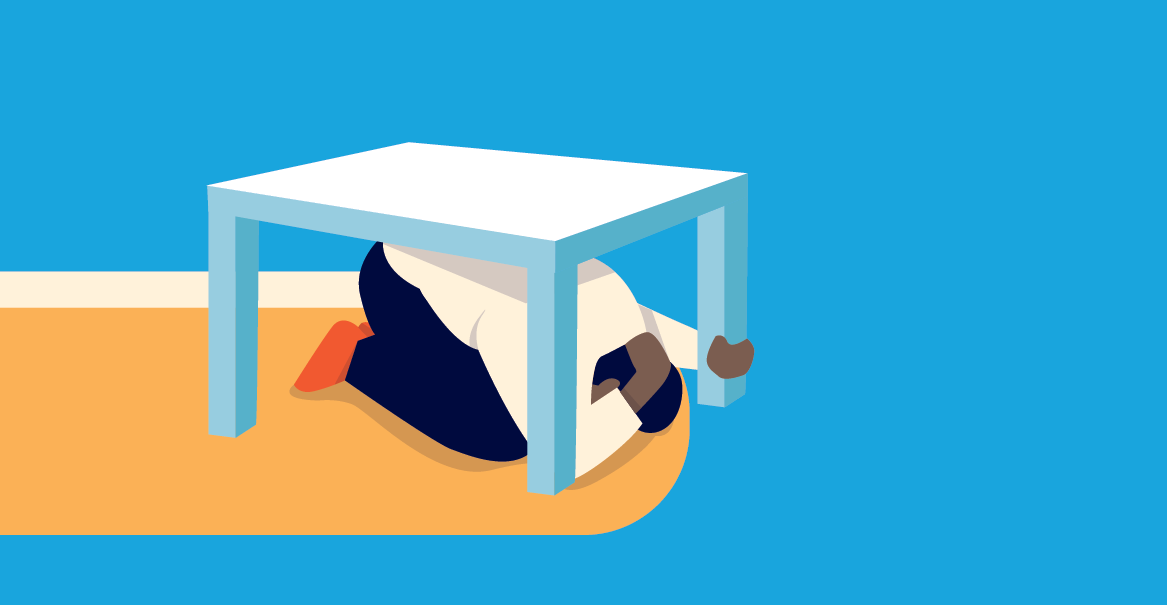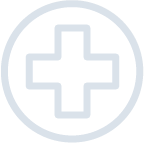
On October 19, 2023, practice how to Drop, Cover, and Hold On at 10:19 a.m. during the annual Great BC ShakeOut.
The Great BC ShakeOut is an annual province-wide earthquake drill for everyone to practice how to protect themselves and to be better prepared in the event of an earthquake: Drop to the ground (before the earthquake drops you!), take Cover by getting under a sturdy desk or table, and Hold On to it until the shaking stops.
Why is this information important?
- Earthquakes can strike suddenly and without warning, so knowing what to do during and after an earthquake is very critical to ensure safety.
- You can secure items in your household to have reduced property damage.
- During an emergency, if the community is prepared, it helps first responders focus their effort on people who require immediate support and leads to efficient resource allocation.
ShakeOut: Practice Drop, Cover, and Hold On
Before the drill
-
- Learn the basics of Drop, Cover, and Hold On.
- Download a drill recording with realistic earthquake sound effects from ShakeOutBC.
During the drill
-
- On October 19, 2023 at 10:19 a.m. announce the start of the drill play the downloaded recording.
- Direct participants to Drop, Cover, Hold On
- Have participants Drop to the ground, take Cover under a table or desk, and Hold On as if a real earthquake was occurring.
- Learn what you should do if you have a disability or physical limitation at ready.ubc.ca.
- When the shaking portion of the drill stops, ask participants to stay in place and count to 60, giving displaced objects a chance to settle, then cautiously come out of their safe Drop, Cover, and Hold On location.
- They should also look around and assess what might fall on them during a real earthquake. These objects can be secured after the drill.
- Take some photos to share and demonstrate that your group participated in the drill.
-
- Announce the drill is over and that everyone can stand up.
After the drill
- Encourage participants to discuss their experiences.
- Share photos of your best ‘Drop, Cover and Hold on’ and stories of your drill on social media. Tag @ubc on Twitter and @universityofbc on Instagram, and @ShakeOutBC.
- Discuss the importance of personal emergency preparedness. For more resources, visit ready.ubc.ca and the PreparedBC website.
Tips for campus locations
Classroom/Office: ‘Drop, Cover, Hold On’ under your desk or workstation.
Lecture Theatre: Drop to the ground between rows. Protect your head and neck with your arms, and bend over as far as possible.
Laboratory: “Drop, Cover, Hold On” under the work bench or at the end of the bench.
Library: ‘Drop, Cover, Hold On’ under a desk or table. Drop to the ground; move carefully to the end of the stack. If possible, ‘Drop, Cover, Hold On’ under a desk or table.
Learn more about how to stay safe before, during, and after an earthquake
UBC Alert: UBC will be testing its emergency notification system
As part of ShakeOut, UBC will be testing its emergency notification system, UBC Alert.
UBC Alert is used in active and urgent situations that require your immediate attention to maintain safety and security on campus. If you are registered for UBC Alert, students, faculty and staff will receive a test notification by text and voice message on October 19, 2023. The test will also run on our campus-wide digital signage systems.
Reminder to:
- Update your contact information on Workday (for faculty and staff) and Student Service Centre (for students) to ensure you receive the latest information in urgent situations through UBC Alert.
- Download the UBC Safe Vancouver app for direct access to campus safety resources, and turn on push notifications to receive timely alerts and notifications.
Download the UBC Safe Vancouver app
Take the first step to preparedness by downloading the UBC Safe Vancouver app and turning on push notifications to receive timely updates and urgent notifications. The UBC Safe App is free and recommended for UBC students, faculty, staff, neighbours and campus visitors.
Learn more about the UBC Safe App
Earthquake preparedness tips
- At home: Secure heavy furniture and items. Avoid placing heavy objects on high shelves. Keep a pair of shoes by your bed at all times in case of a nighttime earthquake.
- Quick fact: Did you know that one of the most common injuries that emergency departments had to deal with during the 6.7 Northridge earthquake that hit Southern California in the early morning was removing broken glass from people’s feet?
- In the car: If you are driving during an earthquake, slowly bring your car to a stop in an open and safe area away from bridges, power lines, trees and buildings. Turn off your engine and wait inside until the shaking stops. Remain inside if a power line falls on your vehicle until emergency personnel can get you out safely.
- At UBC: Review the UBC Emergency Preparedness Earthquake page to learn about how to prepare for an earthquake and what to do during an earthquake at UBC. Also, participate in an earthquake drill during the Great BC Shakeout.
Earthquake related facts
- The Vancouver Lower Mainland is located in a seismically active region known as the Cascadia Subduction Zone.
- Scientists have identified the potential for a major earthquake along the Cascadia Subduction Zone, often referred to as “The Big One.”
- After a major earthquake, there are often aftershocks, which are smaller earthquakes that follow the main event. Aftershocks can continue for days, weeks, or even months, and they can complicate recovery efforts and cause further damage.
We all have a role to play in an emergency
We all have a role in protecting ourselves and making our campus safe. Learn more about what to do when an earthquake strikes.
Don’t forget to download the UBC Safe Vancouver app for direct access to campus safety resources, and turn on push notifications to receive timely alerts and notifications.



